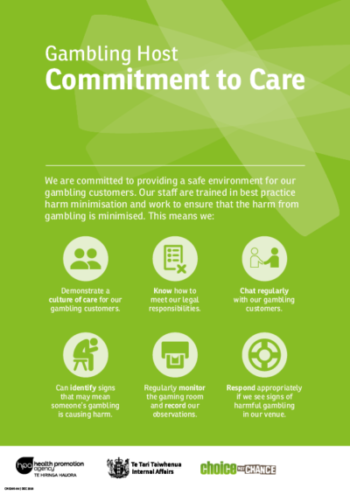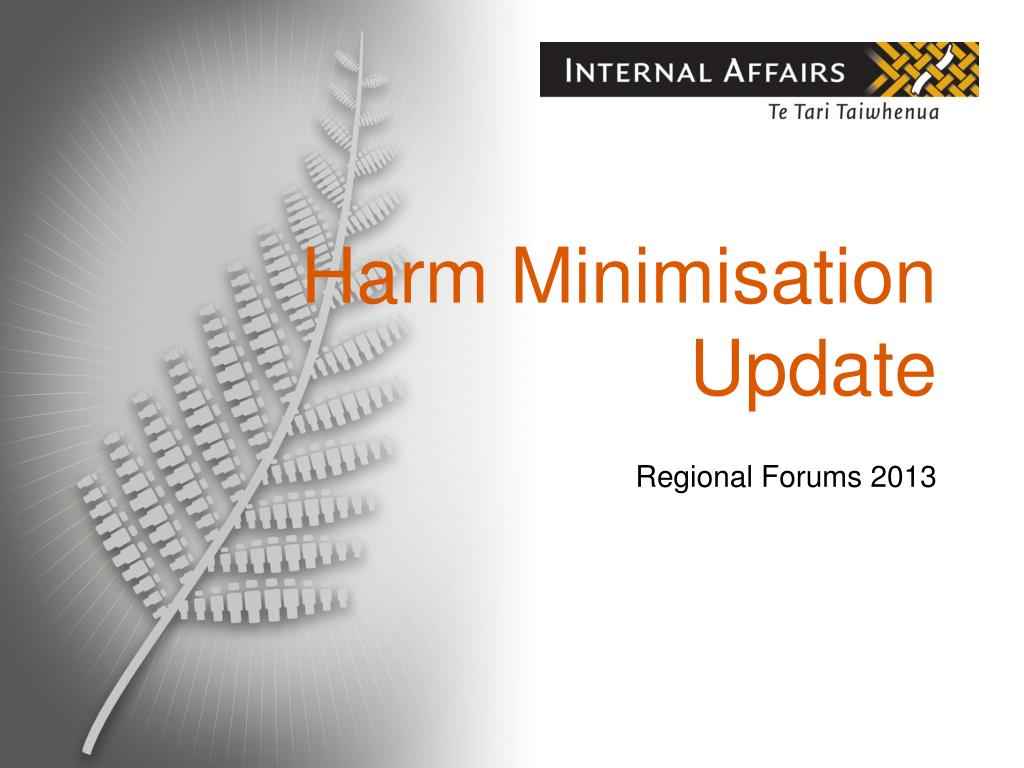Harm Minimisation Gambling
Introduction
Smith adds that operators could also tailor their harm minimisation tools. “It is important for the gambling industry to be able to recognise markers of harm for different groups, including women, so that interventions can be targeted appropriately.”. The Gaming Machines Amendment (Gambling Harm Minimisation) Bill 2020 will update the Gaming Machines Act 2001 to help registered clubs and hotels minimise gambling harm and provide support to gaming machine players. The Bill would change responsibility for managing gambling related harms.
The Southern Trust has developed a harm minimisation policy which includes information on identifying problem gamblers. Venue managers are required to use the policy to identify actual or potential problem gamblers, approach any person identified, and offer information or advice to the person. A copy of the can be downloaded here:

Indicators
It is recognised that problem gamblers may exhibit behaviours that indicate they are experiencing gambling problems. Indicators may be witnessed first-hand by the venue manager or their staff or may be observed by other patrons and brought to the attention of venue staff. It is generally only reasonable to believe that a person may be experiencing a problem if several indicators are apparent over an extended period.
Staff at the venue will approach patrons who display the indicators and will offer information regarding problem gambling. Patrons are encouraged to monitor their own behaviour regarding the listed indicators.
General Signs
Length of play
- Gambles for long periods (three or more hours) without taking a break
- Gambles most days
- Finds it difficult to stop at closing time
Social behaviour
- Becomes angry at or stands over other players
- Rude to other gamblers or staff
- Complains to staff about losing

Money
- Puts large wins straight back into the machine
- Tries to withdraw money two or more times
- EFTPOS repeatedly declined
- Leaves venue to find more money to gamble
Behaviour during play
- Tries to play two or more machines
- Plays intensely without reacting to what’s going on around them
- Plays very fast (high spend per line)
- Shows frustration (grunting/groaning, playing roughly)
- Shows some signs of distress (looks depressed, sweating, nervous/edgy)
- Has gambling rituals or superstitions (rubbing, talking to machine)
Strong signs
- Gambler tells staff that gambling is causing them problems
- Shows obvious signs of distress (crying, holding head in hands, shaking)
- Has an angry outburst towards staff, customer or machine (shouting/swearing, kicking/hitting the machine)
- Appearance or hygiene deteriorates significantly
- Tries to borrow money from customers or staff
- Gambles from opening to closing
- Leaves children in car while gambling
- Friends or family raise concerns about the gambler
- Goes out of their way to avoid being seen at the venue (including asking staff to not let others know they are there)

- Gambling Harm-Minimisation Measures Post 1999
Gambling Harm-Minimisation Measures Post 1999
An Australian overview with particular reference to the Northern Territory
Abstract
The purpose of the paper is to present an overview of the gambling harm-minimisation measures that are implemented across Australia with a view towards identifying those demonstrably effective measures that may be appropriate to the Northern Territory (NT) context.
The paper is separated into six key areas:
- implications of the Productivity Commission’s 1999 Report
- public health and responsible gambling
- the gambling landscape in Australia
- codes of practice in operation
- harm-minimisation measures
- a discussion of findings and key areas for further research.
While there were several recommended practices that were not widely supported across any of the different sectors, there was variation between the sectors in the practices that were adopted.
Over the last three decades the liberalisation of gambling has facilitated the emergence of a multi-billion dollar industry. In 2005-06 the total gambling turnover (the amount gambled) in Australia was over $148 billion. However, this development has not been accompanied by adequate or evaluated measures for consumer protection.
In 1999 the Productivity Commission’s report into Australia’s gambling industries represented the first comprehensive national study into the economic and social impacts of the gambling industry in Australia. This report highlighted an alarming level of problem gambling and other indirect social and economic costs. The Commission also reported a regulatory environment that was disjointed and inconsistent between jurisdictions. It identifies a need for:
- policy which was open and developed through community and industry consultation
- a separation between industry and government to avoid conflict of objectives and interests.

Most governments have initiated new responsible gambling practices since 1999. Responsible gambling and harm-minimisation measures have been introduced across all forms of gambling to help address the individual and social impacts of problem gambling.
Contact
For further information about this report or to access a hard copy:
Gambling Harm Minimisation Bill
Licensing NT
Department of Attorney-General and Justice
Phone: (08) 8935 7643
Email: AGD.LicensingNT@nt.gov.au
Harm Minimisation Strategies Gambling
Last updated: 11 April 2019
Share this page: